#flood waters
Text
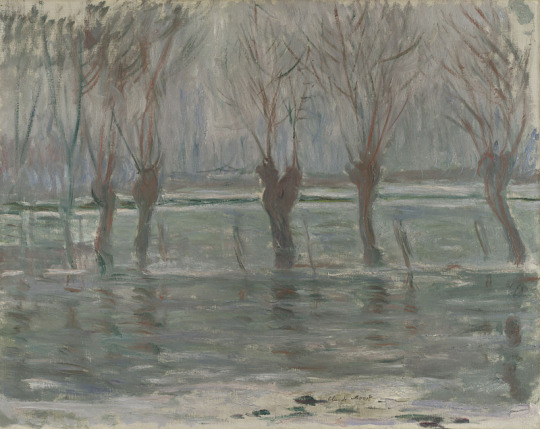
Flood Waters, Claude Monet, 1896
55 notes
·
View notes
Text
okay i am reading flood waters because apparently i hate myself… i’ll be back to update yall
#good omens#aziracrow#crowley#aziraphale#aziraphale good omens#crowley good omens#good omens 2#aziraphale x crowley#ao3#good omens fic#flood waters#ao3 fanfic
21 notes
·
View notes
Text

Started off doing rocks and mountains, scribbled cause I got mad, turned out looking like flood waters, so that's what it is now :/
#amoa#art diary#sketchbook#digital drawing#digital art#clip studio paint#csp#landscape practice#flood waters#and trees#damn#trees#I love trees
3 notes
·
View notes
Text
The Year of the Flood - 1993
I am in the flood, and the flood is in me.
In the year of 1993, the mighty Mississippi River flooded its banks and spread out over 30,000 square miles. It was one of the greatest deluges in its history, second only to the great flood of 1927. By October of 1993, the flood waters finally started to recede—and that was the month and year that I was born.
My mother and father were fishing on the Mississippi River near Louisiana, Missouri during the height of the Flood of ‘93. Of course, this means that my mother was pregnant with me at that time. Before I was even born, I was being gently rocked by flood waters while my parents fished off their old John boat. They camped along the flooded banks in a cramped camper for a week during that summer. Perhaps, then, it is no wonder that I am drawn to the high, muddy water and the sound of the rain. The flood is in my blood.
The river is in my father, and in those that came before him.
The river is in my father's blood, too. He was taken to the Mississippi River at a young age and fell in love with the water and wildlife, and in turn he instilled that in me. Many a summer day was spent boating on the Mississippi, until one day Dad decided that he was tired of the 45-minute drive to get there. He started searching for a small house— “a river shack,” he said—to purchase so we could spend multiple days out on the river without having to camp. Instead, he found a 2600 square foot ranch-style home at an unbeatable price with an incredible view; the closest house to the river in that neighborhood. The nearest boat ramp is a two-minute drive away. A conservation beach along the water stretches almost a half a mile, containing 11 acres, just behind the home. The location was perfect. That home became our River House. I was 12 years' old at the time.
We owned that house during the 2008 flood, which nearly rivaled the Flood of '93. The river came up into our yard, about four feet away from our back porch, and twelve feet away from the house itself. You couldn't get much closer to the river than that. We were able to fish right out of our back yard. Where we lived, the 2008 flood lasted for weeks. At one point, we were worried enough to sandbag around the porch to prevent any damage to it (but it didn't get that far). In 2019, another flood rose just slightly higher than the 2008 flood, but it only lasted a few days.
When I started college, I moved into the River House full time and have been living there ever since. Every day my eyes lay upon the flowing water. It is changing all of the time. For a moment it can be smooth like glass, and the next it is dark and turbulent. There are several places where the current regularly runs backwards along eddies and islands. Floods are common. They don't get all the way up to the yard very often, but over the past decade there hasn't been a year where the river stayed inside it's normal banks all summer. High water records seem meant to be broken. The deluges have become normal now.
A story old as time--great destruction, and great inspiration
Most cultures around the world tell a story of a giant flood that threatened the whole world – The Deluge itself that the Bible's Noah's Ark was built to escape. Even the oldest recorded written story that we have discovered, The Epic of Gilgamesh, has such a tale within it. A flood can damage the land, homes, and people when its banks run over. According to the Britannica, the 1927 Mississippi River flood killed approximately 250 people and further displaced 750,000. However, it also inspired songs, like "The Levee Breaks" by Joe McCoy and Memphis Minnie (later covered by Led Zeppelin), as well as "Louisiana 1927" by Randy Newman. The rolling waters are both dangerous and inspiring, capable of both tremendous strength and calm beauty.
They also served as the inspiration for In the Deluge. Like the mighty Mississippi, sometimes emotions can overwhelm us, drown us, and overflow out of us. Sometimes our levees break that we built up to contain them. Our emotions can whisk us away like a river, drag us down like sea serpent, and spin us around like a whirlpool. However, there also is calm, peace, and growth to be gotten from the rain. Life flourishes where there is water. We cannot live without it.
When I first conceived the theme of this poetry collection, I called it "Drowning in the Deluge". Alliteration is my jam, and I'm fascinated by the archaic word "deluge". However, as time passed, I realized: just because you're in the midst of a flood, doesn't mean you have to be drowning. I simply changed the title to "In the Deluge". It's a subtle shift, but an important one. Whether we ended up here by choice or by force, we are here, in the flood. We might even be underwater, but we are not drowning. It is a lot of water, but we are weathering it. Maybe there are days where it feels like drowning, but maybe other days we're trying to dive deeper. Some days we are floating adrift. Sometimes we're at the bottom where it's so dark we can't see, and sometimes we're so close to the surface we can breach it. We are always in it, and maybe it's even in us.
Come hell or high water, we will weather it.
-Dana Lockhart
#flood#deluge#poetry#my writing#1993#sliceoflife#blogger#mississippi river#in the deluge#behind the scenes#summer of 1993#weather the storm#let it rain#flood waters
2 notes
·
View notes
Text

Flood Waters Sticker Sheet 1
7 notes
·
View notes
Text
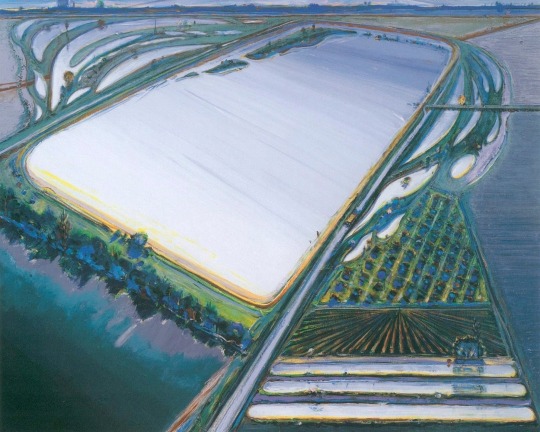
Flood Waters
Wayne Thiebaud
2006
21 notes
·
View notes
Text
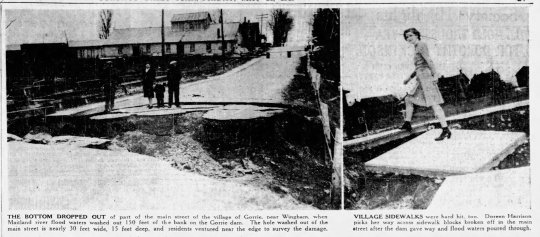
"THE BOTTOM DROPPED OUT of part of the main street of the village of Gorrie, near Wingham, when Maitland river flood waters washed out 150 feet of the bank on the Gorrie dam. The hole washed out of the main street is nearly 30 feet wide, 15 feet deep, and residents ventured near the edge to survey the damage.
VILLAGE SIDEWALKS were hard hit, too. Doreen Harrison picks her way across sidewalk blocks broken off in the main street after the dam gave way and flood waters poured through."
- from the Toronto Star. May 14, 1943. Page 21.
#wingham ontario#huron county#flood waters#flooding#spring flooding#canadian winter#spring thaw#small town ontario#canada during world war 2
0 notes
Text
As relentless rains pounded LA, the city’s “sponge” infrastructure helped gather 8.6 billion gallons of water—enough to sustain over 100,000 households for a year.
Earlier this month, the future fell on Los Angeles. A long band of moisture in the sky, known as an atmospheric river, dumped 9 inches of rain on the city over three days—over half of what the city typically gets in a year. It’s the kind of extreme rainfall that’ll get ever more extreme as the planet warms.
The city’s water managers, though, were ready and waiting. Like other urban areas around the world, in recent years LA has been transforming into a “sponge city,” replacing impermeable surfaces, like concrete, with permeable ones, like dirt and plants. It has also built out “spreading grounds,” where water accumulates and soaks into the earth.
With traditional dams and all that newfangled spongy infrastructure, between February 4 and 7 the metropolis captured 8.6 billion gallons of stormwater, enough to provide water to 106,000 households for a year. For the rainy season in total, LA has accumulated 14.7 billion gallons.
Long reliant on snowmelt and river water piped in from afar, LA is on a quest to produce as much water as it can locally. “There's going to be a lot more rain and a lot less snow, which is going to alter the way we capture snowmelt and the aqueduct water,” says Art Castro, manager of watershed management at the Los Angeles Department of Water and Power. “Dams and spreading grounds are the workhorses of local stormwater capture for either flood protection or water supply.”
Centuries of urban-planning dogma dictates using gutters, sewers, and other infrastructure to funnel rainwater out of a metropolis as quickly as possible to prevent flooding. Given the increasingly catastrophic urban flooding seen around the world, though, that clearly isn’t working anymore, so now planners are finding clever ways to capture stormwater, treating it as an asset instead of a liability. “The problem of urban hydrology is caused by a thousand small cuts,” says Michael Kiparsky, director of the Wheeler Water Institute at UC Berkeley. “No one driveway or roof in and of itself causes massive alteration of the hydrologic cycle. But combine millions of them in one area and it does. Maybe we can solve that problem with a thousand Band-Aids.”
Or in this case, sponges. The trick to making a city more absorbent is to add more gardens and other green spaces that allow water to percolate into underlying aquifers—porous subterranean materials that can hold water—which a city can then draw from in times of need. Engineers are also greening up medians and roadside areas to soak up the water that’d normally rush off streets, into sewers, and eventually out to sea...
To exploit all that free water falling from the sky, the LADWP has carved out big patches of brown in the concrete jungle. Stormwater is piped into these spreading grounds and accumulates in dirt basins. That allows it to slowly soak into the underlying aquifer, which acts as a sort of natural underground tank that can hold 28 billion gallons of water.
During a storm, the city is also gathering water in dams, some of which it diverts into the spreading grounds. “After the storm comes by, and it's a bright sunny day, you’ll still see water being released into a channel and diverted into the spreading grounds,” says Castro. That way, water moves from a reservoir where it’s exposed to sunlight and evaporation, into an aquifer where it’s banked safely underground.
On a smaller scale, LADWP has been experimenting with turning parks into mini spreading grounds, diverting stormwater there to soak into subterranean cisterns or chambers. It’s also deploying green spaces along roadways, which have the additional benefit of mitigating flooding in a neighborhood: The less concrete and the more dirt and plants, the more the built environment can soak up stormwater like the actual environment naturally does.
As an added benefit, deploying more of these green spaces, along with urban gardens, improves the mental health of residents. Plants here also “sweat,” cooling the area and beating back the urban heat island effect—the tendency for concrete to absorb solar energy and slowly release it at night. By reducing summer temperatures, you improve the physical health of residents. “The more trees, the more shade, the less heat island effect,” says Castro. “Sometimes when it’s 90 degrees in the middle of summer, it could get up to 110 underneath a bus stop.”
LA’s far from alone in going spongy. Pittsburgh is also deploying more rain gardens, and where they absolutely must have a hard surface—sidewalks, parking lots, etc.—they’re using special concrete bricks that allow water to seep through. And a growing number of municipalities are scrutinizing properties and charging owners fees if they have excessive impermeable surfaces like pavement, thus incentivizing the switch to permeable surfaces like plots of native plants or urban gardens for producing more food locally.
So the old way of stormwater management isn’t just increasingly dangerous and ineffective as the planet warms and storms get more intense—it stands in the way of a more beautiful, less sweltering, more sustainable urban landscape. LA, of all places, is showing the world there’s a better way.
-via Wired, February 19, 2024
#california#los angeles#water#rainfall#extreme weather#rain#atmospheric science#meteorology#infrastructure#green infrastructure#climate change#climate action#climate resilient#climate emergency#urban#urban landscape#flooding#flood warning#natural disasters#environmental news#climate news#good news#hope#solarpunk#hopepunk#ecopunk#sustainability#urban planning#city planning#urbanism
14K notes
·
View notes
Link
Rescue efforts are underway in parts of Malaysia after seasonal floods killed at least four people and displaced more than 40,000.
Among the deaths confirmed Saturday by state authorities in Johor was a man who became trapped in a car that was swept away by rising floodwaters.
Footage taken by rescue workers and volunteers in towns across the southern state showed groups of people stranded on rooftops as their houses disappeared underwater.
Images shared by the National Flood Disaster Agency showed rescuers wading chest-deep in some areas to save people trapped in their homes. One rescue worker was seen carrying a baby in a bucket to safety.
Other images showed flooded roads and forests and vehicles submerged in muddy water.
#accidents#disasters and safety#asia#wet weather#flood waters#homes#flight#rooftops#baby#cars#trucks#forest trees#Johor#Malaysia#news#via Energy100FM#world news
0 notes
Text

2K notes
·
View notes
Text
S̶̤̋̉t̸o̶̝̍r̵̛͠m̸̠͌͝
Look, I know I promised a continuation of "Get in the Water," but I had this idea and just had to write it, okay? So this is the non-canon sequel, the canon one is still in progress.
They escaped. Batman dragged Damian's frozen body away from the Lazarus Pit and through the tunnels as Danyal's screams-sobs-wails echoed behind them. Eventually the sound ebbed away and they emerged to the surface.
A debrief was demanded from everyone; even Todd was in the Cave. Damian trembled, his only sign of distress, his mind stuck on Danyal's face, his brother's voice rebounding around his head.
Father's debrief had been rough. Damian could barely explain what happened, why he was drawn to the waters, why Danyal wanted to drown him. He'd only explained the Danyal was someone he'd killed while with the League, and Father was the only one to doubt his explanation.
Damian took the first opportunity to escape to the showers. Stripping down, Damian turned the faucet and the bathroom lit up bright green.
He flinched away, and when he opened his eyes, the water was just water. A stone sunk into his stomach.
The next day, while Father was consulting with Justice League Dark, Grayson and Drake returned to the caves for their own investigation of the Pits. And while they found the cavern--found by tracking the batarang Father threw--it was desert dry. There was no sign of Lazarus Water, nor did it look like it had ever been there.
That night, as Damian was washing his face before bed, he filled the sink basin with water. He turned away for one second, but when he looked back, he almost dipped his face under the green slime oozing out the spout. He bolted, and when he returned with a startled Father, the water had returned to normal.
Grayson insisted on taking him out for lunch the following day, citing that Damian needed a "break." Damian was furious, but allowed it; Justice League Dark was visiting the cave to discuss the... incident, and Damian wanted to interrogate them. He... he needed to know if that was really Danyal or not. If his sweet brother could have been twisted after his murder into that monster, that Siren crooning at him to choose to die.
He'd never contemplated the fate of his brother's immortal soul before. Had he done this to him? Could Damian had avoided this by killing him honorably, instead of cowardly poisoning Danyal so he'd pass away in his sleep?
Damian allowed Grayson order for him. He wasn't hungry. The clouds above swirled ominously as he followed Grayson to a nearby awning with a picnic bench underneath.
Grayson took a bite of his gyro. "So? How have you been coping these past few days?"
"I'm not an invalid, Grayson," Damian hissed, glaring. "I'm fine."
A frozen breath brushed across his ear. "Ĺ̶̥̲̪̀̐ỉ̷̢̜̚a̴̧͖͛r̶̺̫̾͗̃͜,̶͕̐" Danyal whispered in his ear.
Grayson didn't notice or hear Danyal's voice. "You see, I don't believe you. One of your dead League friends is supernaturally gunning for you, Dami; it's normal to feel out of sorts."
Damian scoffed. "Nothing about this situation is normal."
He looked down at his food and sighed. "Yeah, that's for sure. I'm sorry, Damian. I wish this wasn't happening to you."
"And I wish the creature would just attack already," Damian griped. "It's the waiting that will kill me, not that fake."
Like someone had been listening, the sky opened up and it rained green throughout Gotham.
#damian and danny are twins#dc x dp#dpxdc#dp x dc#dcxdp#dc x dp crossover#c: damian wayne#c: bruce wayne#c: dick grayson#c: tim drake#everyone kept writing about how Damian would have been dragged under so i wondered what would have happened if he escaped#Danny promised to flood Gotham; now he might just do that#there's a surprising lack of jason in this#i'm imagining he's dodging his own supernatural IRS agent right now#specifically technus bc he'd piss jason off the most#while jason is experiencing rage inducing comedy Damian is experiencing the Horrors#get in the water au
1K notes
·
View notes
Text
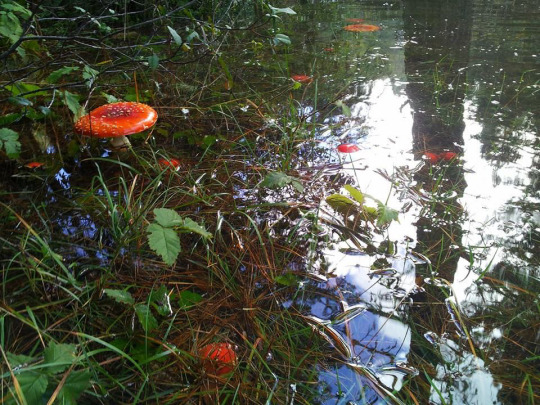
Aquatic Amanita Muscaria patch that was flooded by heavy rain Photography: Sierra Dawn
5K notes
·
View notes
Text
We could use a LifeSaver (Rottmnt comic)
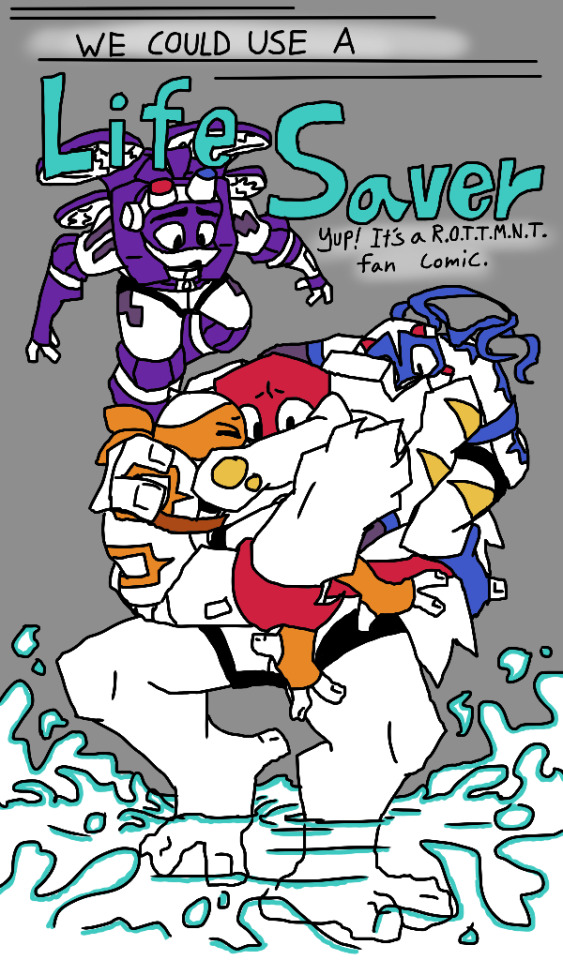
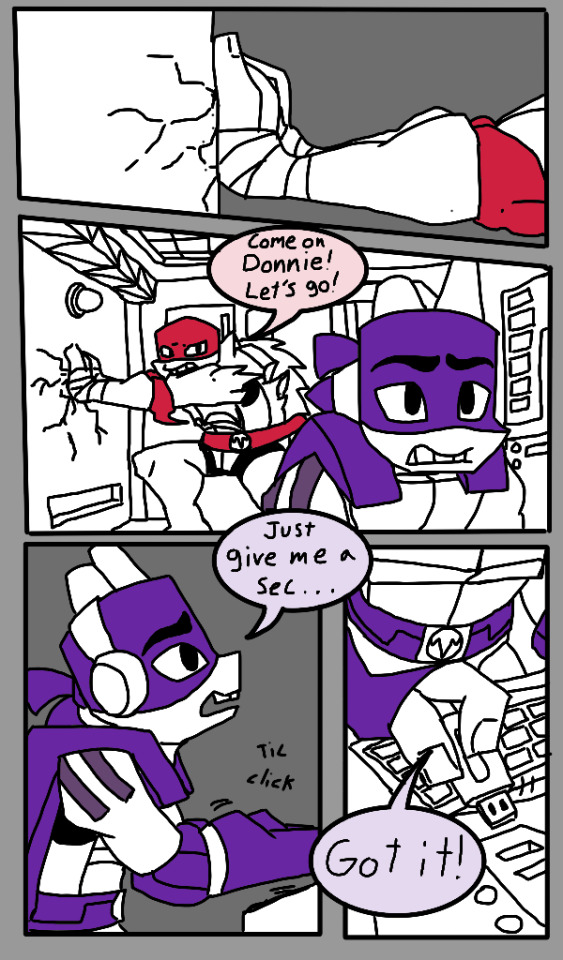
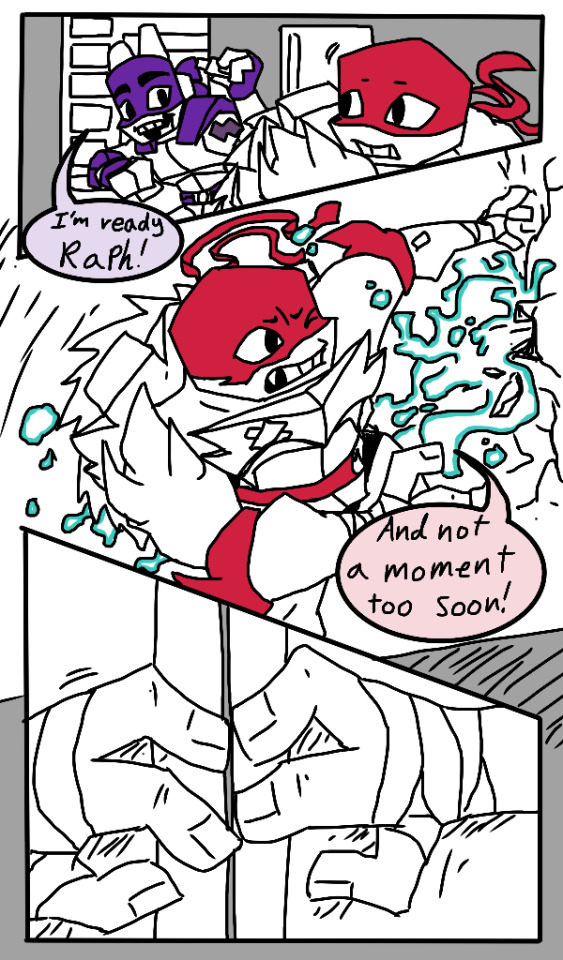



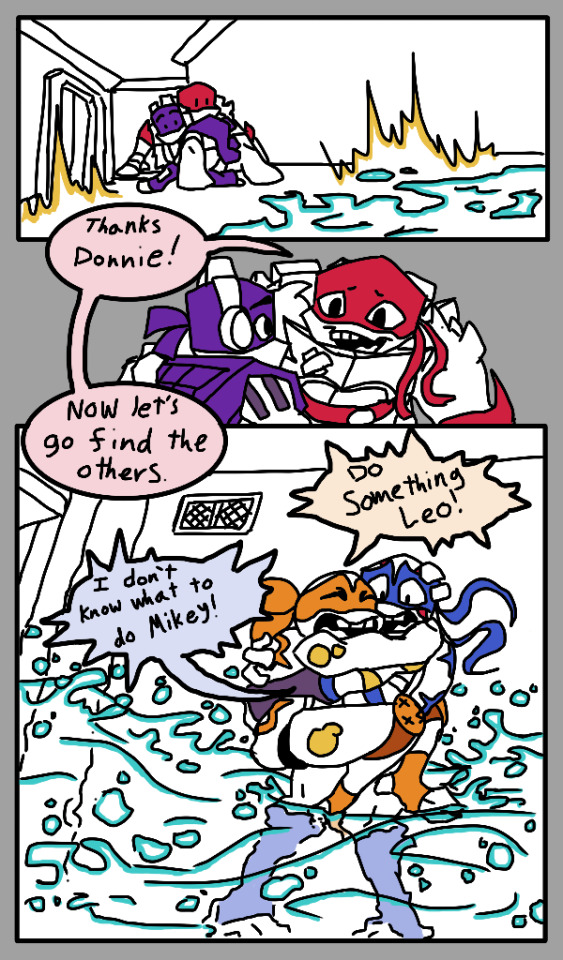


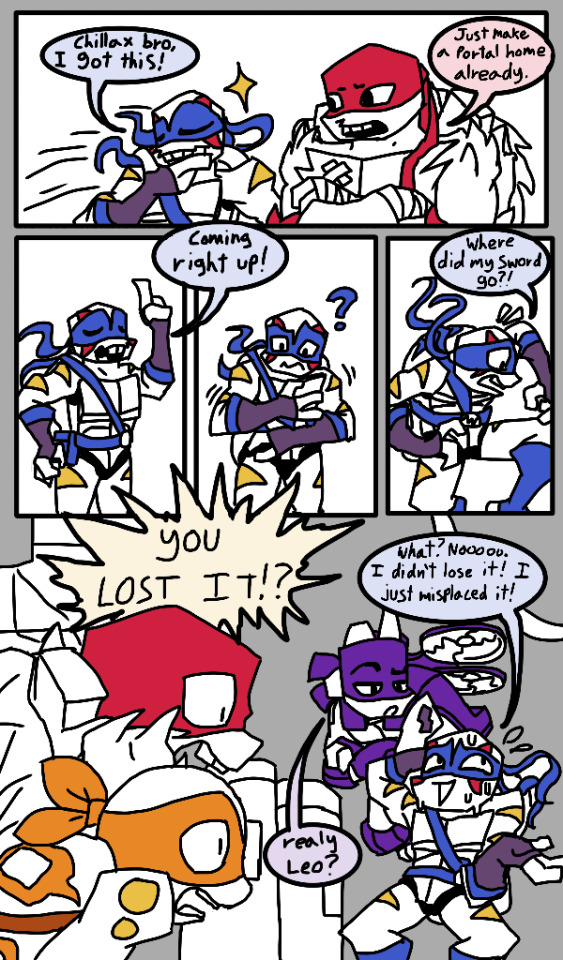
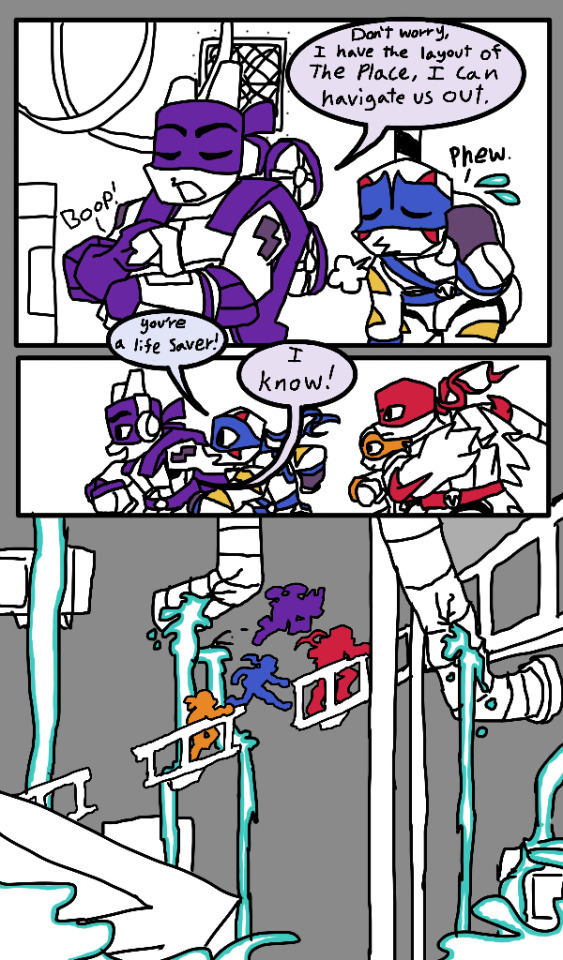

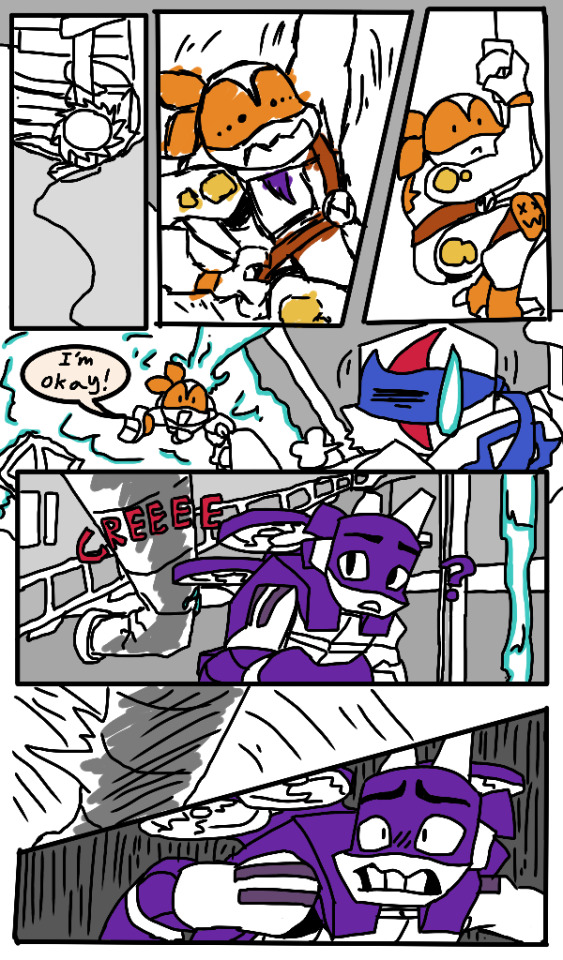
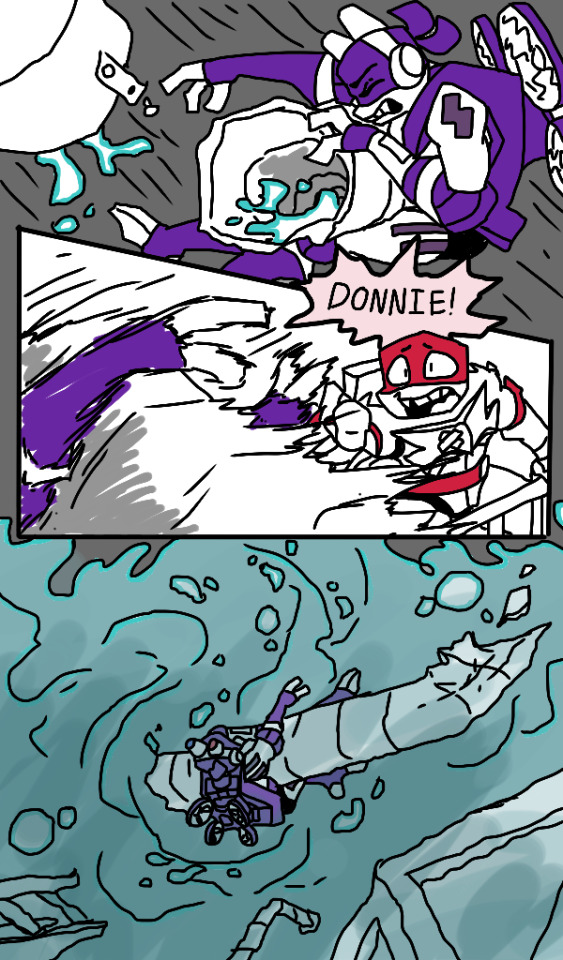



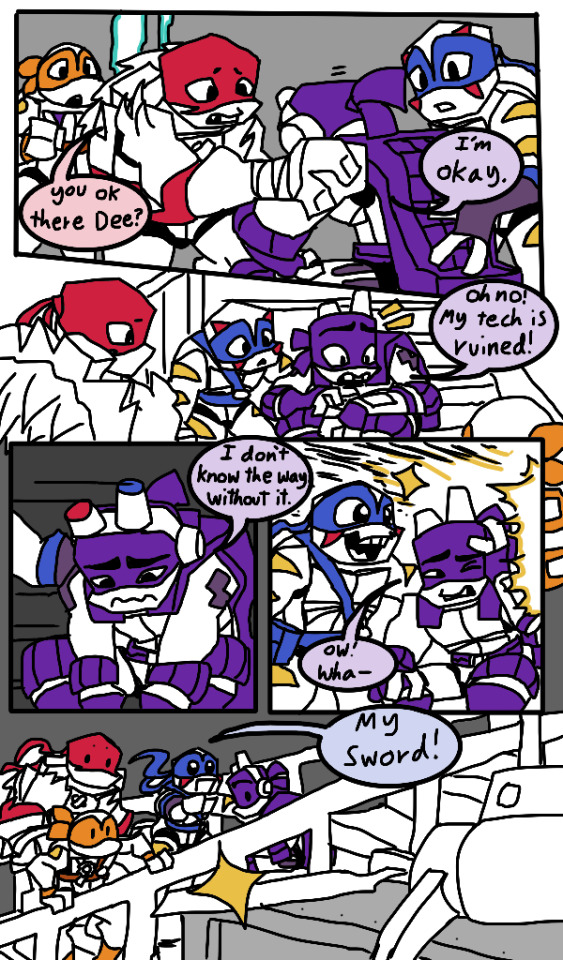
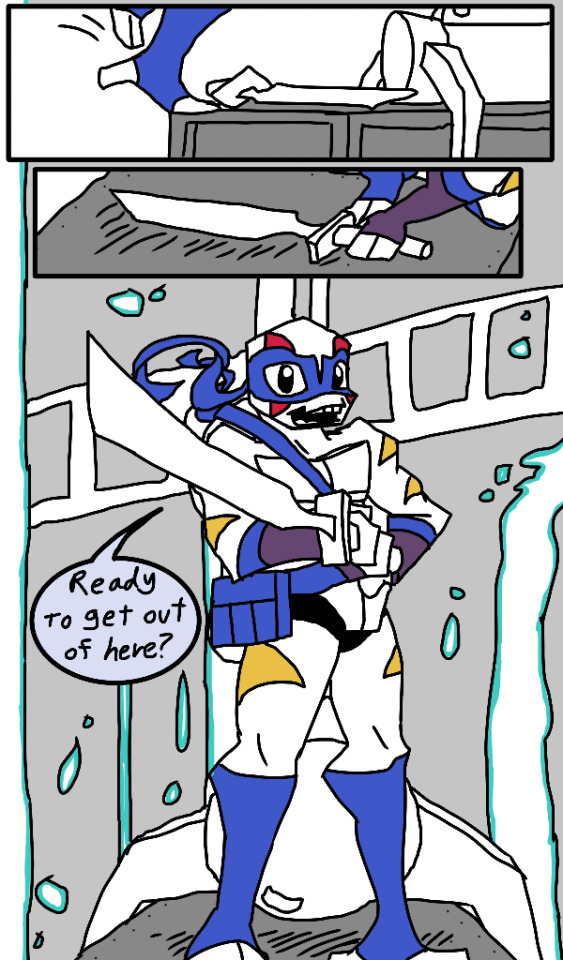
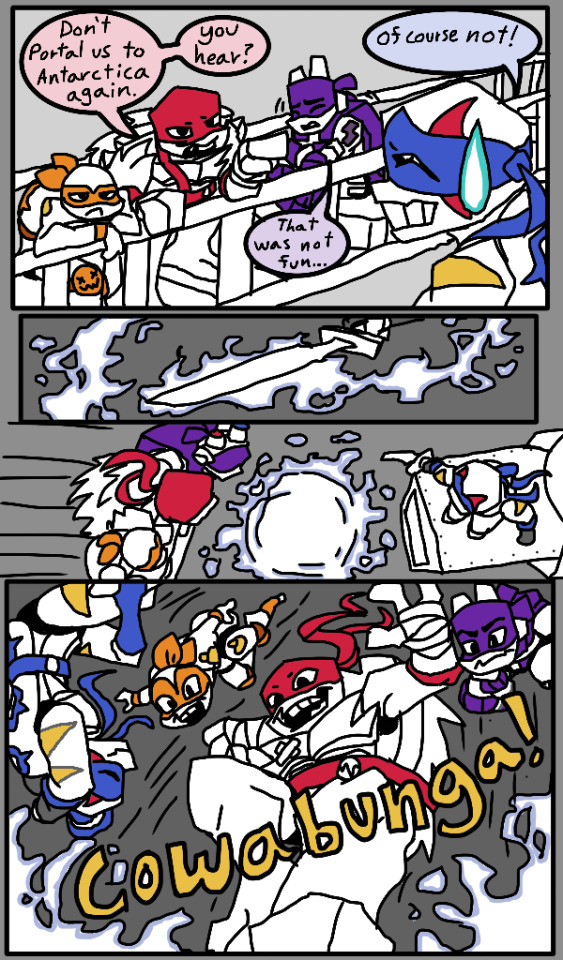
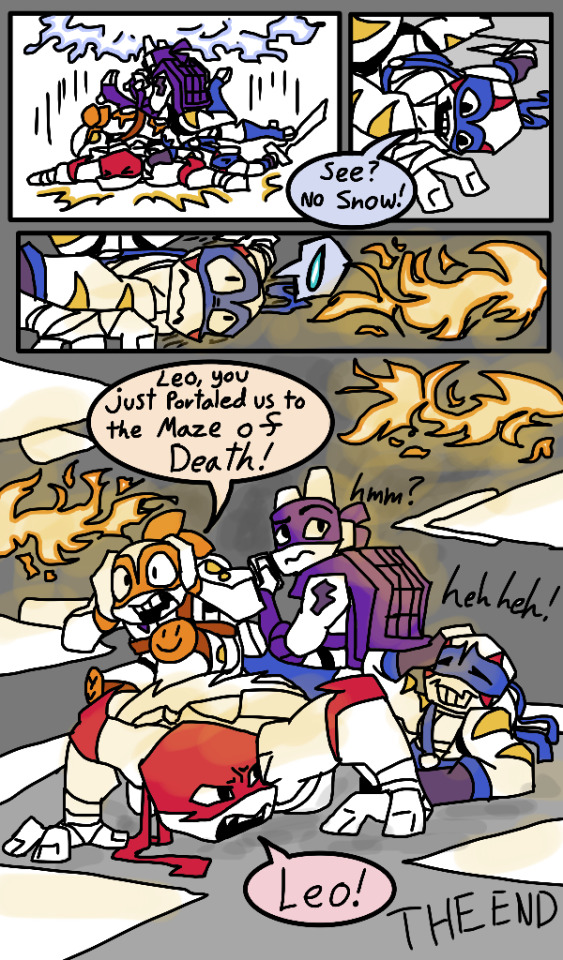
This is a one off comic I made for a challenge! The story theme for the challenge was 'Escaping a Flood'.
So I made this short comic last summer, and just remembered I still had it in my files! 😅
Hope you enjoy/enjoyed this comic with no reasoning to where they are, how they got there, or why any of this is happening.
Action flick, ya know?
#rottmnt#saverottmnt#riseofthetmnt#Rise Leo#Rise Donnie#Rise Raph#rise mikey#Comic#Fan fiction#Flood escape#Water#Action#drama#disaster twins#oh nooo#Drowning?#20 pages
487 notes
·
View notes
Text




Splatoon Au
#splatoon#splatoon oc#my art#erm.#Homerun Au#homerun is like.#an au where the great turf war ended due to the water line rising wayg#wayyyy too high for either side to win. so instead a more evolved salmonid species took over#and there is very few habitable zones for inklings / octolings that aren’t flooded
940 notes
·
View notes
Text


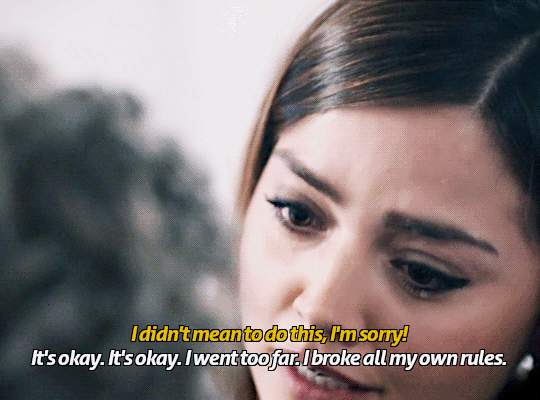
You'd go to hell, if she asked. And she would!
#dwedit#doctorwhoedit#doctor who#modern who#the doctor#**#*dw#twelfth doctor#clara oswald#dark water#before the flood#hell bent#parallelmw
697 notes
·
View notes